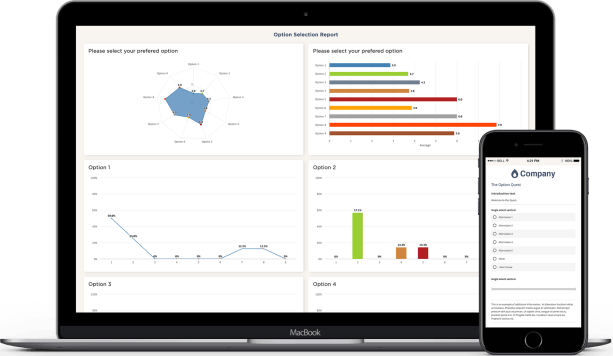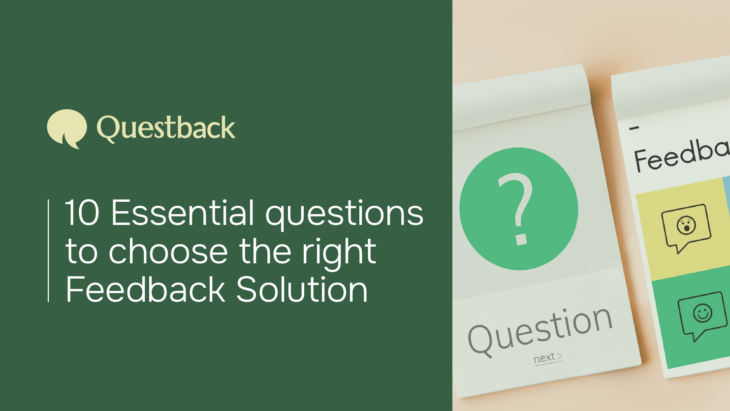- Improved work environment: Addressing issues from exit surveys can enhance the work environment for remaining employees.
- Increased engagement: When employees see the company acting on feedback, their engagement and trust in the company grow.

Advantages of digital exit surveys
Employees leaving a company often want to maintain good relations and might hold back valuable feedback to avoid uncomfortable situations. Digital and anonymous surveys make it easier to provide honest feedback.
How to conduct an exit survey
Planning: Determine the purpose and focus areas, such as work environment, leadership, career opportunities, and work relationships.
Questionnaire: Design a survey with both quantitative and qualitative questions, such as:
- Why are you leaving the company?
- What did you appreciate most about your job?
- What improvements would you suggest for the company?
Implementation: Decide on the method—personal interviews, phone interviews, or online surveys. Ensure anonymity for honest responses.
Analysis and actions: Analyze the results to identify patterns and trends. Develop action plans based on the feedback and communicate these actions to employees.

Example questions in your exit survey
Reasons for leaving: “Why have you chosen to leave the company?”
Work environment: “How would you describe the work environment at the company?”
Leadership: “How has your relationship with your manager been?”
Career opportunities: “Did you feel there were sufficient career opportunities within the company?”
Suggestions for improvement: “What improvements would you suggest for the company?”
Detailed questionnaire design
Open-ended questions
Allow employees to express their thoughts and feelings in detail.
Examples:
-
- “Can you describe specific situations that influenced your decision to leave the company?”
- “What would have made you stay at the company?”
Quantitative methods
Use Likert scales and other quantitative methods for structured measurement.
Examples:
-
- “On a scale of 1 to 10, how would you rate your overall experience at the company?”
- “How likely are you to recommend the company to a friend?” (eNPS)
Analysis methods and tools
Data analysis tools: Use tools like Excel, SPSS, the feedback tool’s analysis section, or specific HR analytics tools to analyze and interpret data.
Identifying trends: Analyze data over time to identify trends and patterns in employee feedback.
Data visualization: Create charts and graphs to visualize results and make them easier to understand and communicate to management.

Future trends
AI and automation: Future exit surveys will likely integrate AI and automation for quick and accurate data analysis, enabling more proactive actions based on real-time data.
Integrated platforms: Companies will use integrated platforms that collect feedback from all stages of the employee lifecycle, providing a holistic view of the employee experience.
Personalization: Exit surveys will become more personalized, with questions and topics tailored to the individual employee’s experiences and role within the company.
Exit surveys: common challenges and solutions
Employee resistance: Employees may hesitate to participate in exit surveys due to fear of retaliation or lack of trust. Solution: Ensure anonymity and emphasize the importance of their feedback for future improvements.
Lack of action on feedback: If companies do not act on collected feedback, employees may lose trust in the survey process. Solution: Create and communicate clear action plans based on the feedback.
Insufficient data analysis: Collecting data without a clear plan for analysis can lead to missed insights. Solution: Use advanced analysis tools and methodologies to process and interpret data effectively.
Frequently asked questions about exit surveys
How to handle sensitive responses? Anonymity and confidentiality are crucial for employees to feel comfortable sharing sensitive information. Explain how their responses will be used and protected.
What to do if response rates are low? To increase response rates:
- Send reminders a few days after the initial invitation.
- Offer incentives, such as gift cards or charitable donations, to motivate participation.
- Clearly communicate the importance of their feedback and how it will be used to improve the company.
- Ensure the survey is easy to understand and quick to complete.
- Inform employees in advance that an exit survey will be sent and that their feedback is valuable to the organization.
















